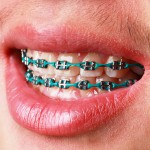
Long-term stability following orthodontic treatment required long-term retention. Compliance with removable retention regimens is variable so some practitioners favour fixed retainers. The aim of this study was to compare the survival of mandibular lingual retainers placed using either chemical or photo polymerization after orthodontic treatment.
Patients who had completed orthodontic treatment with no active caries, restorations,/fractures on the mandibular anterior teeth, or periodontal disease; and adequate oral hygiene were recruited. There were randomised to either a lingual retainer placed with either chemically cured composite (CC) or light-cured composite (LC) following standardised preparation procedure. The main outcome was any first-time failure of the lingual retainer. The secondary outcome was the pattern of failure based on the adhesive remnant index. The patients were advised to visit the orthodontist initially at 1, 3, and 6 months after retainer placement, and then at 12, 18, and 24 months. Outcome assessment was blind.
- 220 patients were randomised (1:1) ratio.
- 16 patients were lost to follow-up 6 in CC group and 10 in LC group.
- At a minimum follow-up of 2 years, 47 of 110 (42.7%) in the CC group and 55 of 110 (50.0%) of the LC retainers had some type of failure (log-rank test, P = 0.35).
- There was no statistical difference in failures between the two groups
- There was weak evidence that age is a significant predictor for lingual retainer failures (HR, 0.96; 95% CI, 0.93-1.00; P = 0.08).
- Adhesive remnant index scoring was possible for only 66 of the 102 (64.7%) failures and did not differ between composites (Fisher exact test, P = 0.16).
- No serious harm was observed other than gingivitis associated with plaque accumulation.
The authors concluded
The results of this study indicated no evidence that survival of mandibular lingual retainers differs between chemically and light-cured adhesives. The overall failure rate was 46.4%; however, this included any type of failure, which may have exaggerated the overall failure rate.
Links
Nikolaos Pandis, Padhraig S. Fleming, Dimitrios Kloukos, Argy Polychronopoulou, Christos Katsaros, Theodore Eliades. Survival of bonded lingual retainers with chemical or photo polymerization over a 2-year period: A single-center, randomized controlled clinical trial. American Journal of Orthodontics & Dentofacial Orthopedics – August 2013 (Vol. 144, Issue 2, Pages 169-175, DOI: 10.1016/j.ajodo.2013.02.030)
Littlewood SJ, Millett DT, Doubleday B, Bearn DR, Worthington HV. Retention procedures for stabilising tooth position after treatment with orthodontic braces. Cochrane Database of Systematic Reviews 2006, Issue 1. Art. No.: CD002283. DOI: 10.1002/14651858.CD002283.pub3.
